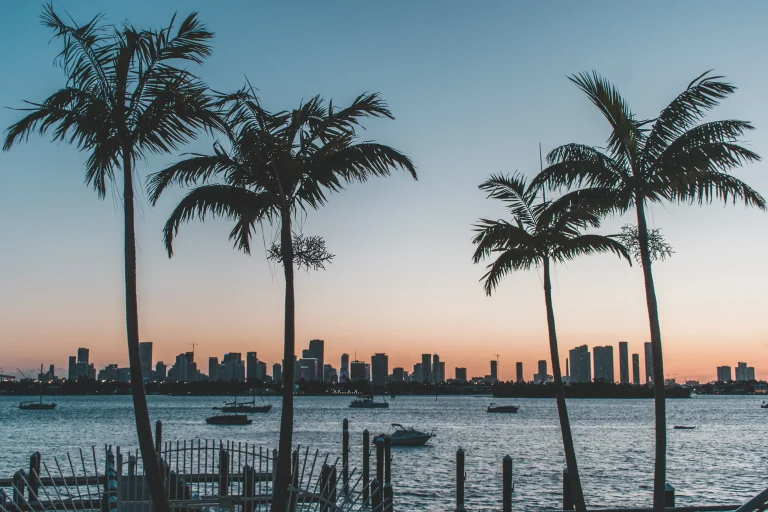Coldest Winter Vs. Summer Temperatures In San Francisco
San Francisco is known for its mild year-round climate, but the city still sees seasonal temperature swings. If you’re curious how San Francisco’s coldest winter compares to its coldest summer, read on for a complete breakdown.
If you’re short on time, here’s a quick answer: San Francisco’s coldest winter month is January with average lows of 43°F, while its coldest summer month is June with average lows of 51°F.
In this in-depth guide, we’ll examine historical temperature data to identify San Francisco’s coldest months in winter and summer. We’ll look at average lows as well as extreme minimum temperatures. We’ll also discuss the climate factors that contribute to winter vs. summer cold in San Francisco. By the end, you’ll understand how much colder winters are than summers in this coastal city.
Overview of San Francisco’s Climate
San Francisco is known for its unique climate, which falls into the Mediterranean climate zone. This means that the city experiences mild, wet winters and dry, cool summers. The city’s proximity to the Pacific Ocean plays a significant role in shaping its weather patterns.
Mediterranean Climate Zone
San Francisco’s Mediterranean climate is characterized by mild, wet winters and cool, dry summers. This type of climate is typically found in regions bordering the Mediterranean Sea, such as Southern Europe and parts of California.
The city’s location on the western coast of the United States, coupled with the influence of the cold California Current, creates a climate that is distinct from other parts of the state.
Consistently Mild Year-Round
One of the defining features of San Francisco’s climate is its consistency throughout the year. The city experiences relatively mild temperatures, with average highs ranging from the 50s to the 70s Fahrenheit (10-25°C) and average lows in the 40s to 50s Fahrenheit (5-15°C).
This moderate climate is due to the cooling effect of the Pacific Ocean and the prevalence of fog, which rolls in from the ocean and blankets the city.
Driest Summer Season
While San Francisco’s summers are generally cool, they are also the driest season of the year. The city experiences a marked decrease in rainfall during the summer months, with most precipitation occurring between November and April.
This dry season is a result of the California Current, which brings cold ocean waters and inhibits the formation of convective clouds necessary for rain. As a result, San Francisco residents and visitors can expect clear skies and comfortable temperatures during the summer months.
For more information about San Francisco’s climate, you can visit the National Weather Service website.
Coldest Winter Month in San Francisco
January is the Coldest
In San Francisco, the coldest winter month is January. With its close proximity to the Pacific Ocean, San Francisco experiences a cool and foggy climate throughout the year. However, January tends to be the chilliest month, with average temperatures dropping to around 50°F (10°C) during the day and even lower at night.
So, if you’re planning a visit to the city during this time, be sure to pack some warm layers to stay cozy!
All-Time Record Lows
While January may be the coldest month on average, San Francisco has experienced some extreme cold temperatures in its history. The all-time record low temperature for the city was recorded on December 11, 1932, when the mercury dropped to a bone-chilling 27°F (-2.8°C).
This record still stands today and serves as a reminder of the occasional icy blasts that can sweep through the city, even though they are relatively rare.
Climate Causes of Winter Colds
Several factors contribute to the colder temperatures experienced in San Francisco during the winter months. Firstly, the city’s coastal location exposes it to the cool marine influence from the Pacific Ocean. The ocean currents bring in cold air, which can result in lower temperatures.
Additionally, the presence of fog in the city is more prevalent during the winter, further adding to the chilly conditions. Lastly, the topography of the surrounding area, including the hilly terrain and the Golden Gate Bridge, can create microclimates that result in cooler temperatures in some parts of the city.
For more information on San Francisco’s climate and weather patterns, you can visit the official website of the National Oceanic and Atmospheric Administration (NOAA) at www.noaa.gov.
Coldest Summer Month in San Francisco
San Francisco, famous for its cool and foggy summers, experiences a unique climate pattern that sets it apart from other cities in California. While many cities in the state experience scorching hot temperatures during the summer months, San Francisco remains relatively chilly.
In fact, the coldest month of summer in San Francisco is June.
June is the Coldest Summer Month
Contrary to expectations, June is the coldest month of summer in San Francisco. While other parts of the country are enjoying warm temperatures and sunny days, San Francisco residents are often reaching for their jackets and scarves.
The average daily high temperature in June is around 64°F (18°C), and the average low temperature drops to about 52°F (11°C). The cooler temperatures can be attributed to the oceanic influence and the fog that rolls in from the Pacific Ocean.
All-Time Record Summer Lows
San Francisco holds some impressive records when it comes to summer lows. In fact, the all-time record low temperature for the city was set in June. On June 14, 1945, the temperature dropped to a bone-chilling 40°F (4°C), which is quite remarkable for a summer month.
This record low is a testament to the city’s unique climate and the influence of the cold ocean currents.
Climate Causes of Summer Chill
Several factors contribute to the cool temperatures experienced in San Francisco during the summer months. The city is located near the cold California Current, which brings in cool air from the north.
Additionally, the cold water from the Pacific Ocean acts as a natural air conditioner, keeping the temperatures lower than in surrounding areas. The coastal fog, often referred to as the “marine layer,” also plays a significant role in cooling down the city.
This fog forms when warm air from inland areas meets the cold ocean currents, resulting in the iconic foggy conditions that San Francisco is known for.
For more information on San Francisco’s weather patterns and climate, you can visit the National Weather Service or the Climate Central websites.
Comparing Winter and Summer Temperature Extremes
Average Lows
When it comes to average lows, there is a stark difference between winter and summer temperatures in San Francisco. In the winter months, temperatures can drop to as low as 45°F (7°C), making it a relatively mild winter compared to other parts of the country.
However, in the summer, temperatures rarely dip below 55°F (13°C), creating comfortable evenings for residents and visitors alike.
Extreme Minimums
While San Francisco is known for its relatively temperate climate, it does experience occasional extreme minimum temperatures. In the winter, the city has seen record lows of 32°F (0°C) or below, causing frosty conditions and even occasional snowfall in the surrounding areas.
On the other hand, during the summer months, extreme minimum temperatures rarely go below 50°F (10°C), ensuring that warm weather enthusiasts can enjoy outdoor activities without worrying about chilly nights.
Daytime Highs
The disparity between winter and summer temperatures is most pronounced when comparing daytime highs. In the winter, San Francisco experiences average highs of around 57°F (14°C), with occasional warmer days reaching up to 65°F (18°C).
However, during the summer months, the city comes alive with warmer temperatures, with average highs ranging from 64°F (18°C) to 70°F (21°C), and occasionally even reaching up to the mid-80s°F (29-32°C).
This makes San Francisco a popular destination for those seeking relief from scorching summer heat in other parts of the country.
When planning a visit to San Francisco, it’s important to consider these temperature extremes to ensure you pack appropriately and make the most of your time in the city. Whether you’re visiting during the winter or summer, San Francisco’s unique climate offers a pleasant experience year-round.
Conclusion
While winters in San Francisco see greater temperature extremes, even summer nights can get chilly. January averages 8-12 degrees colder than June overnight lows. For planning vacations and packing lists, remember that San Francisco experiences more pronounced seasonal swings than its year-round mild climate implies. But wintertime lows in the 40s will always be cooler than the coolest summer weather in the 50s.








